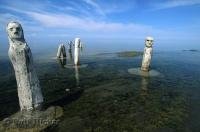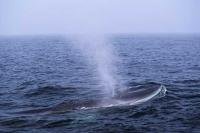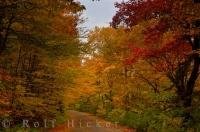Quebec Pictures
Selection of Quebec pictures, photos and photo galleries, photographed by professional photographer Rolf Hicker. (There are 741 photos in this photo gallery.)
The province of Quebec is not only the largest in Canada (about one and a half million square kilometres) but, arguably, the most unique. Originally known as New France, Quebec still lives up to the name. The provincial flag consists of a blue background with the white cross of the old French flag separating the four white Fleurs- de -lis which honour the Virgin Mary, and the official language is French.
In November 2006, the Canadian House of Commons passed a 'symbolic' motion to recognize the Quebecois as a nation within a United Canada. Quebec's neighbouring western province is Ontario, but to the east and south there is a plethora of provinces and states - Newfoundland and Labrador, New Brunswick, Nova Scotia and Prince Edward Island in Canada, and New York, Vermont, New Hampshire and Maine in the United States.
The Canadian Shield, formed in the Precambrian era, covers 80 percent of Quebec's area. ...More information below photos...
Interesting Photo galleries related to "Quebec Pictures"
...Continue gallery information: The Saint Lawrence River and the Appalachian Mountains make up the remaining 20 percent. The original settlers to the territory arrived thousands of years ago, after the Ice Age glaciers had receded. The nomadic Asian people who travelled across the Bering Strait to North America developed into three distinctive groups - Algonquian, Iroquoian and the Inuit. All had their own language and way of life, the Inuit and Algonquin continued the nomadic ways and travelled much of the Quebec peninsula hunting and fishing. In contrast, the Iroquois settled along the Saint Lawrence River farming and developing the arable lands.
Although it is known that the Vikings landed in Newfoundland during the end of the 10th century, and Europeans fished the Northern Atlantic Ocean no explorers had claimed the land until Jacques Cartier. The French explorer, on his second of his three voyages (1534 - 1542) to the New World, claimed the land of the Saint Lawrence Valley for the King of France. At the time there was a population of about one thousand in the settlements in the area around what is now Quebec City and further up river near Montreal. During the rest of the 16th century more Europeans, especially the French and Basque, fished the waters at the mouth of the Saint Lawrence and traded with the natives for furs.
In 1608 Samuel de Champlain founded Quebec City on the site of Stadacona, an old Iroquoian village. (Stadacona was said to be the village from which Canada was named.) Quebec City became the first city, built by Europeans, to be a permanent community, not just a trading post. It is the capital city of the province of Quebec. The word Quebec comes from the Algonquin 'Kebec' meaning 'where the river narrows'. In 1663 New France became a Royal Province under Louis XIV of France and more settlers came. Europeans explored this new country and fur trading flourished. For most of the 17th century the Iroquois attacked the Algonquin tribes who had befriended the New France immigrants - the hostilities continued until 1701 when the Iroquois signed the Montreal Peace Treaty. In 1753 France and Britain began a territorial war in North America which culminated on September 13, 1759 when General Wolfe defeated General Montcalm on the Plains of Abraham near Quebec City. France gave their lands to Britain by signing the Treaty of Paris in 1763 and the part of New France known as 'Canada' became the Province of Quebec. In 1867 the Confederation Act was signed by the four original provinces, Ontario, Quebec, New Brunswick and Nova Scotia. The Act also stated that French Canada was a term used for the Francophones living in these provinces.
A historic vacation city and province as these Quebec pictures show, Quebec was the location chosen as the centre of New France during the 17th and 18th centuries and where the roots of French civilization in the Americas were established.
I have travelled extensively through this vacation province, and have taken many pictures of old Quebec City which has been restored and celebrates its French heritage and culture. Old Quebec city is a UNESCO World Heritage Site and a family vacation spot.
But don´t forget to browse through other Quebec Pictures, from Montreal to the Gaspe Peninsula.






























